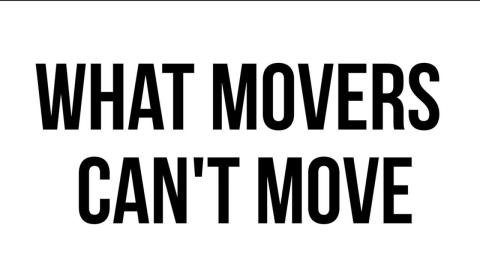Moving can be both an exciting and stressful experience, especially when considering the costs associated with the process. However, by implementing some strategic packing and labeling techniques, you can make the move smoother and more affordable. Two key ways to achieve this are by properly labeling your boxes and making use of new packing materials. Here are some tips to help you pack efficiently, cut down on moving expenses, and ensure an organized move.
The Benefits of Proper Labeling
Properly labeling your boxes is one of the easiest ways to reduce moving time and costs. Clear, systematic labeling helps both you and your movers quickly identify what items are in each box and where they need to go in your new home. This can save hours on moving day, reducing the time movers spend handling your belongings and, therefore, lowering the cost if you’re paying by the hour.
How to Label Boxes Effectively
-
Use a Color-Coding System Assign a different color for each room in your new house. Use colored markers, labels, or tape to mark boxes accordingly. For example, all kitchen items can be labeled with a yellow tag or tape, living room items with blue, and bedroom items with green. This color-coding makes it easy to see at a glance where each box should go.
-
Detailed Description & Inventory While color-coding helps movers quickly place boxes in the correct room, you’ll also need to know what’s inside each box. Write a brief description of the box's contents on the side. For example, instead of labeling a box simply as "Kitchen," add a more specific label like "Kitchen - Pots & Pans." For high-value or fragile items, make a note as well ("Fragile - Handle with Care").
-
Number Each Box and Keep a Master Inventory List Numbering each box and maintaining a master list that matches each box number with its contents and destination can make unpacking a breeze. For instance, Box #1 might be "Bedroom - Bed Linens," Box #2 "Living Room - Books," and so on. This list will not only help you stay organized but also provide a quick way to identify if any boxes are missing.
-
Label on Multiple Sides Labeling boxes on multiple sides ensures the label is visible no matter how they are stacked or placed. Movers don’t have to spend time turning boxes to find the label, and you can see at a glance which box belongs where.
-
Use Clear "Priority" Labels Some items will be needed immediately upon arrival, like toiletries, bedding, and kitchen essentials. Clearly mark these boxes as "Open First" or "Essentials." This ensures that these boxes are easy to find, so you don’t have to dig through everything to find the items you need right away.
Using New Packing Materials to Save Time and Money
Many people try to save money on a move by using second-hand packing materials like old boxes, newspaper, or recycled materials. While this might save a few dollars initially, using new, high-quality packing materials can help protect your items more effectively and reduce your overall moving costs in the long run.
Why Use New Packing Materials?
-
Durability & Safety Old boxes may have lost their strength and integrity, especially if they have been used multiple times or exposed to moisture. New boxes are more durable and less likely to collapse or break during the move, reducing the risk of damage to your items.
-
Uniform Size & Easier Stacking Using new boxes of uniform size makes it easier to stack and organize the boxes both on the moving truck and in your new home. Movers can load the truck more efficiently, reducing the time spent organizing the space and potentially reducing labor costs.
-
Better Protection with Bubble Wrap & Packing Paper New packing materials like bubble wrap, foam sheets, and proper packing paper offer far superior protection than old newspapers or towels. New materials help to cushion and protect fragile items from breaking, while also making it easier to pack items tightly and securely.
-
Specialty Boxes for Specific Items Consider purchasing specialty boxes for items like dishware, glassware, TVs, and mirrors. These boxes are designed to protect fragile or awkwardly shaped items and often include inserts to keep things securely in place. While they may be a small additional cost, they can prevent damage to expensive items, saving money on replacements or repairs.
Efficient Packing Tips with New Materials
-
Wrap Items Individually: Use packing paper or bubble wrap to wrap fragile items individually. This will prevent items from knocking against each other and breaking.
-
Fill Empty Spaces: Use packing peanuts, foam, or paper to fill any gaps in your boxes. Empty spaces in a box can cause items to shift around, potentially leading to damage.
-
Limit Box Weight: Keep the weight of each box to a manageable level. Ideally, boxes should not weigh more than 50 pounds. Lighter boxes are easier and quicker to carry, reducing time and labor on moving day.
Conclusion: The Cost-Saving Impact of Proper Labeling and New Packing Materials
By properly labeling your boxes and investing in new, high-quality packing materials, you can significantly streamline your move and reduce costs. A well-organized labeling system will save time during the move and help with easy unpacking, while new packing materials can protect your belongings and help you pack more efficiently. The initial effort you put into these packing techniques will pay off in a smoother, faster, and potentially cheaper moving experience.


